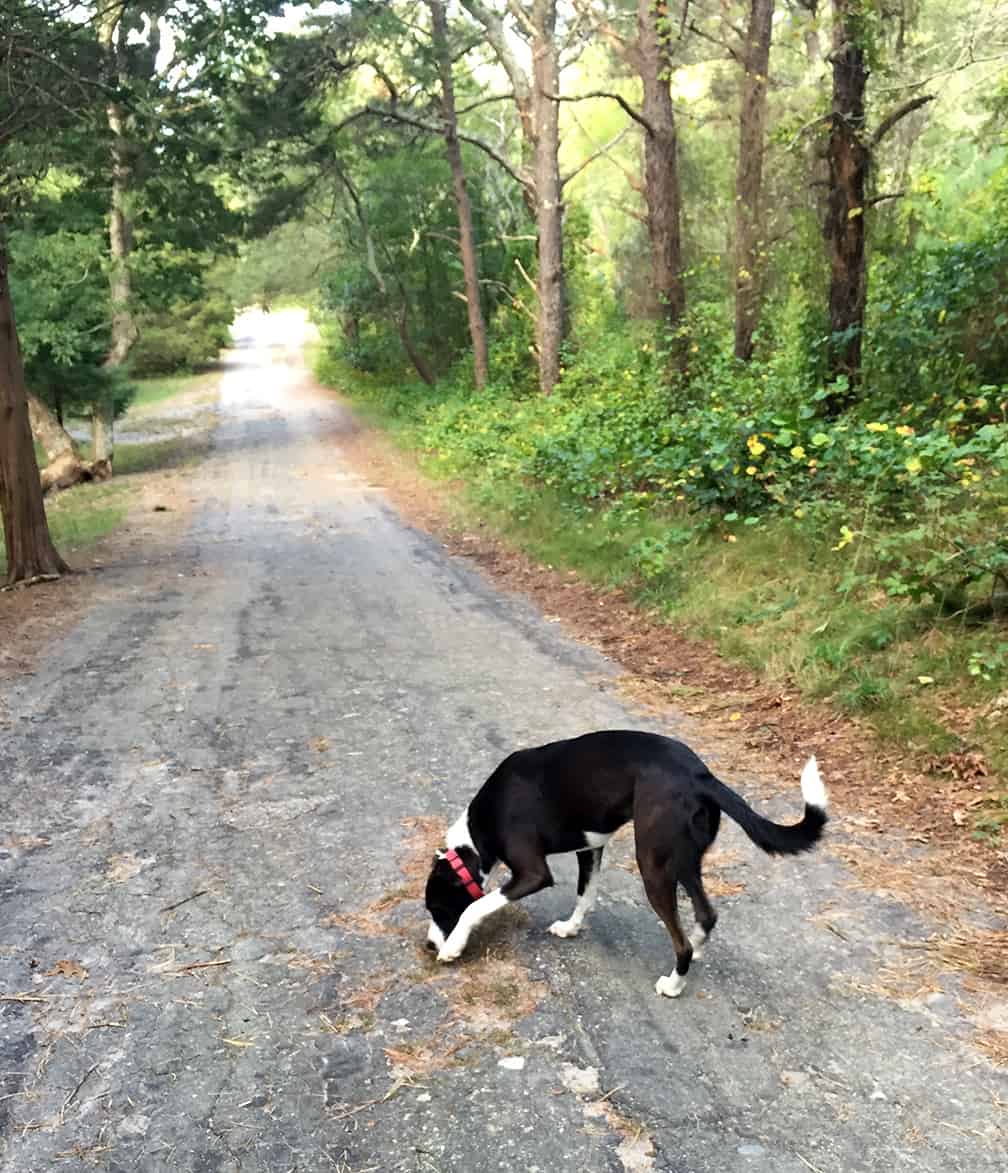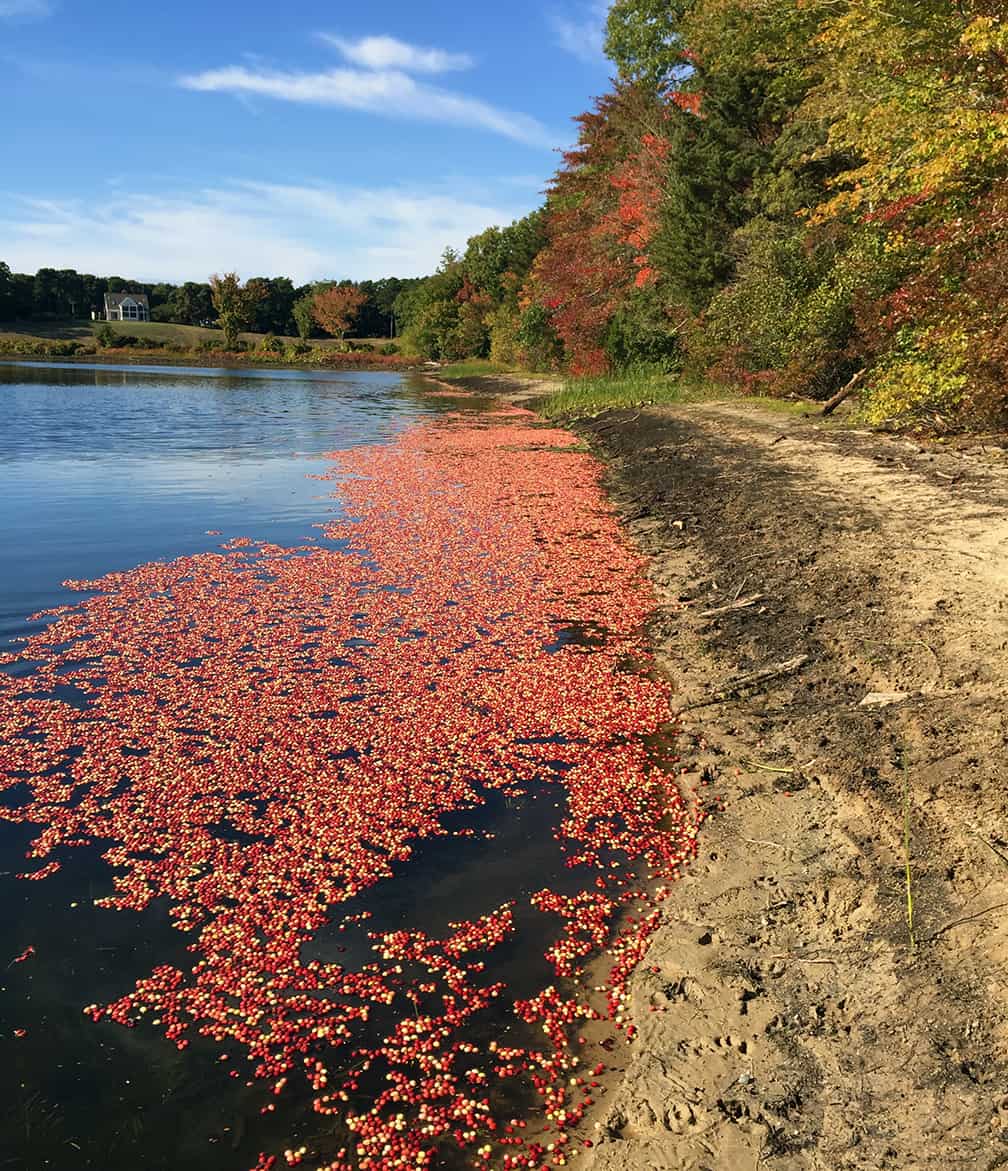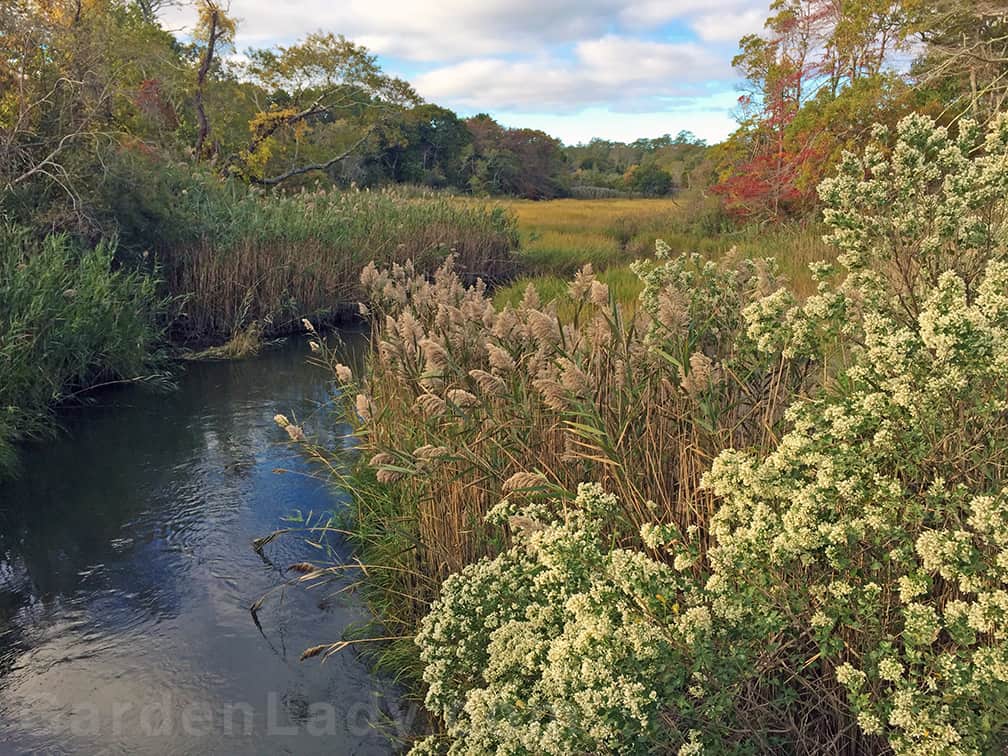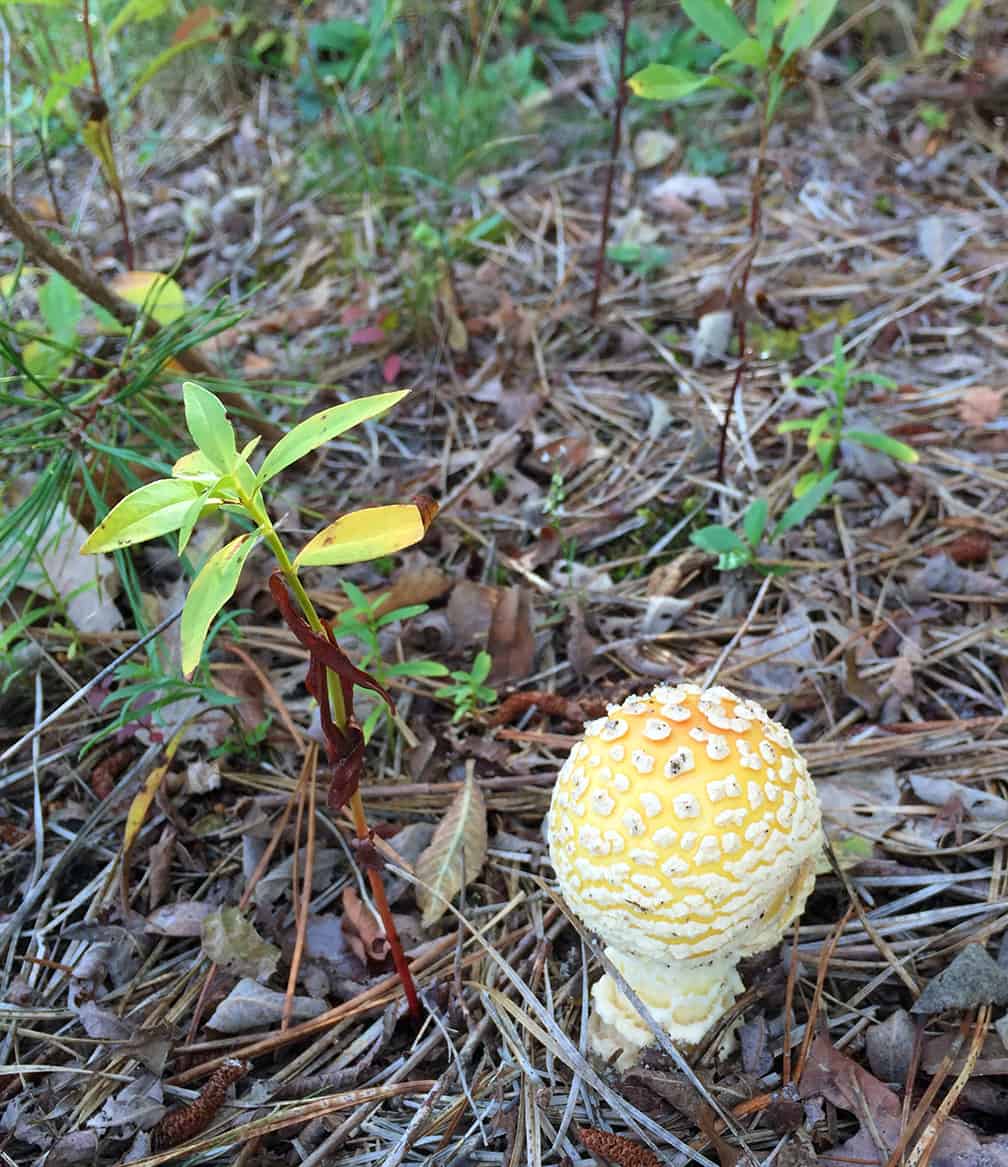There are lessons in garden design everywhere, but especially in natural areas. Here are a few that I was thinking about as I walked our dog in local conservation land.

Clearly marked paths are appealing. They don’t have to be as wide as this road, of course, but when you see a path that stretches ahead through plants it is a visual invitation to plunge into the garden and walk through the plants. A garden path says, “Come on in!”
The other thing that the photo above teaches us about garden design is that we are well off when we plant in layers. Not layers front to back, as most people think of when planning a garden, but in layers bottom to top. A very low layer of plants, topped by some taller ones, and covered by a canopy of the tallest…garden design from the ground up. In this way you are growing a community of plants not a stair-step of short, medium and tall…although you can do that at the same time of course.

There aren’t many places in this world where you can see cranberries floating on a pond in the fall, but Cape Cod is one of them. This scene has a couple of lessons in garden design. The first is the importance of the repetition of color. The currently fashionable term for this is “color echoing.” The trees along the pond repeat the red color of the cranberries and this is pleasing. In the garden we can echo colors with flowers, foliage, or even garden furniture.
Secondly, notice how the cranberries aren’t all just one shade of red. There are several shades of red as well as some orange and yellows there. That makes this area of color much richer. In gardens the inclusion of a range of hues in the same color area is also exciting. Some plants do this on their own. An example is the Profusion Zinnias whose flowers fade as they age so that soon you have three shades of a color on the same plant.
But garden designers can also think about combining two plants in a group that have foliage or flowers in the same color range. A group of plants doesn’t have to be made up of only one variety or a single color.

Natural scenes can teach us about the use of different textures of foliage and shapes of plants. Here the Baccharis halimifolia that’s in flower, billowy and round, contrasts nicely with the upright Phragmites, and the low swaths of the other marsh grasses beyond. The tidal creeks in this photo have the same effect as the path in the first picture – it is a flat area that contrasts with all the textures of foliage and invites us into the scene.
The other thing that we see in the photos above is the impact is has when there is a large group of plants, and those groups are of different sizes. So a group of 5 Baccharis, a larger group of the unfortunately invasive Phragmites, a bigger group of grasses and rushes beyond, and some trees, some grouped and other single specimens. This is easy to replicate in gardens…we just have to remember the power that larger groups have.

In natural areas as in our gardens, we’re also reminded to cherish small surprises. This speaks to the power that a single, small plant, fungus, or object can have. And when something that’s so totally different from the surrounding plant materials appears, it catches our attention and often makes us smile.

Very instructive, C.L. and inspirational. Thank you.